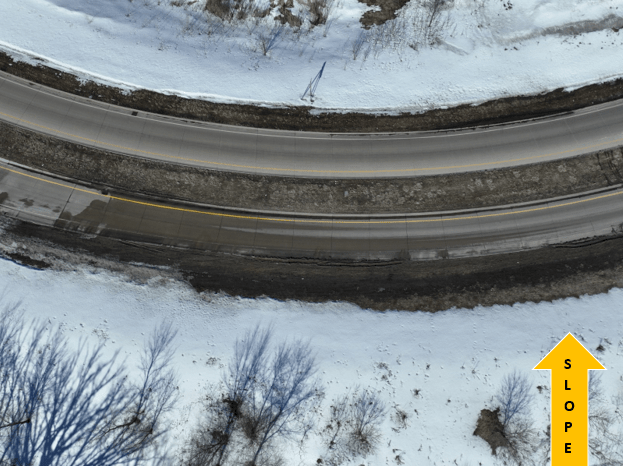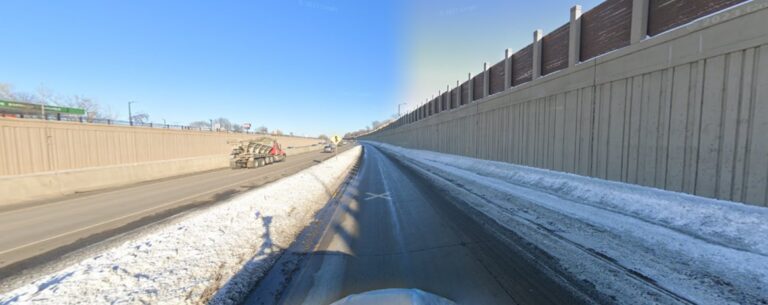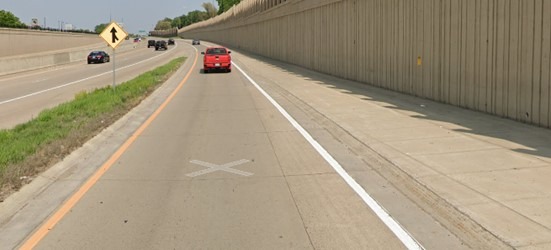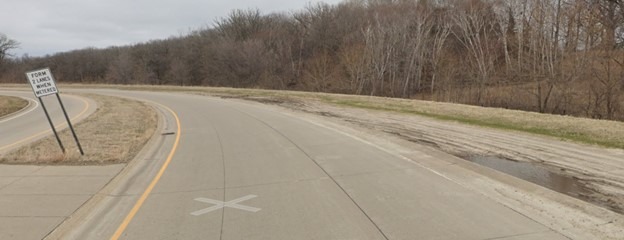Designing for a Low Salt Future
Engineers in cold climate regions have double the design challenges of our more temperate-weather colleagues. We have spent endless energy meeting design standards focused on rain but what level of design effort or requirements have been focused on winter infrastructure performance?
The use of road salt to improve winter performance has created a growing chloride crisis. In Minnesota alone, we spend more than $100 million dollars annually to purchase rock salt for city streets, county roads, and state highways. Each teaspoon pollutes five gallons of water to the Environmental Protection Agency (EPA) chronic chloride standard of 230 mg/l, a standard set to protect aquatic life. Chloride is a forever pollutant. Once applied to the roadway, it eventually enters the water and increases the chloride concentration. Chloride is a top pollutant of concern in the land of 10,000 lakes, and likely a top concern in all cold climate states and countries.
Once winter arrives and plow drivers have public safety on their shoulders, the cutting-edge plow blade and deicers are the top two tools used. For the past few decades, winter maintenance has attempted to dial down chlorides by moving from a “more salt is better” approach to a precision approach. But as hard as maintenance tries to solve the chloride problem, much of it rests on the shoulders of infrastructure design.
 Bolton & Menk launched Low Salt Solutions in 2022 as a commitment to our clients to address the growing chloride concerns. The first phase of this commitment was creating Low Salt Design.
Bolton & Menk launched Low Salt Solutions in 2022 as a commitment to our clients to address the growing chloride concerns. The first phase of this commitment was creating Low Salt Design.
There are two challenges to address in Low Salt Design:
- Improve the speed and efficiency of pavement recovery from snow and ice.
- Stop repeat offenders. Repeat offenders come it two varieties, blowing snow and meltwater. We cannot stop snow from falling, but we can keep it from making more than one appearance on our pavements.

Not Everything is Created Equal
Critical areas require more maintenance and salt to provide public safety. A few examples are braking zones, and high pedestrian use areas like crosswalks and front steps. Applying Low Salt Design strategies in critical areas gives you the biggest return on investment. We are asking our engineers and landscape architects to consider these winter performance categories in cold climate design.
Use the Sun: Maximize Infrastructure Exposure
Our sun provides seemingly limitless amounts of energy, and we need to use its fullest potential. Maximizing sun exposure on transportation infrastructure in winter months will help us keep roadways clear while reducing salt use. The benefits? Improved winter safety and less chloride in the environment.
Winter vegetation shadow management may seem like a daunting task, so start by focusing on critical areas. Intersections and horizontal and vertical curves are areas where traction is paramount in the winter.
The sun’s positioning is something we can’t control, but we can control what might impede its energy from reaching the road surface. Buildings, retaining walls, bridges, and trees cast shade that may last all day when our sunlight exposure is already shortened in the winter months.
So, what can we do? Moving buildings, walls, and bridges already in place is not a feasible option. Tree removal can happen retroactively but is not a popular option, especially with established trees.
The answer is advanced planning early in the design process. By positioning infrastructure components in the preliminary phase and staying cognizant of sun exposure, we can ensure the winter sun reaches pavements in a more budget-friendly way.
Imagine a wooded road corridor with evergreens lining both sides, limiting sun exposure (figure 2a). In the heart of winter, where temperatures above freezing are rare, this road has few options to keep it clear beyond excessive plowing and salt application. Reducing the tree cover or using less dense winter vegetation (Figure 2b) allows the road to receive direct sunlight, or at least increase it by a few hours.
Figure 2a: Deciduous trees on the south side of road allow for greater sun penetration in the bitter, low sun angle months
Figure 2b: During the winter months, deciduous trees allow sun to shine on pavement with minimal shadowing.
Meltwater Control
Accommodating rain events is the focal point of drainage design. The concept of snow and ice meltwater flow is usually an afterthought, if considered at all.
Figure 3 shows an on-ramp with a tall wall on the south side, and a wide concrete area between the ramp and wall, which serves as a potential emergency pull-off area and snow storage. While the rest of the highway receives sun in the winter, the area to the right is shrouded in shadow and relies on ambient air temperature to melt the snow and ice harbored there, resulting in a slow film of water spreading across the ramp. As temperatures dip, this meltwater spread freezes. With the gutters filled with packed ice and snow, the meltwater finds the path of least resistance over the road surface. With this being a critical area where cars are accelerating and merging, winter maintenance crews are forced to drop salt to prevent the water from freezing.


The solution is to reduce the sprawl by shortening the distance the meltwater needs to travel to find drainage infrastructure. Using more catch basins will allow the meltwater to remain contained on the right side of the road. Another solution might be to design the concrete space between the road and the wall with a slight trench or valley down the middle, paired with catch basins, to keep water entirely off the road.
Our Goal: Reduced meltwater sprawl

Figure 5 is another example of meltwater causing issues on a ramp. The area to the right captures snow and ice plowed off the ramp. With an elevated berm on the far right, the meltwater has no other option than to overtop the curb and sprawl across the road to find the drains on the other side. As temperatures drop and the curved ramp becomes covered in ice, motorists might find themselves sliding off the road and over the curb. This is evident with the tire tracks behind the curb. There are also trees beyond the berm, on the south side of the road, limiting the amount of sun this area gets in the winter.
The historical response to this situation is to salt the ramp to improve safety and provide more traction for motorists accelerating onto the freeway. The solution is to reduce the meltwater from spreading over the ramp. Tip-in gutter, more catch basins, or eliminating the berm to the right all provide promising meltwater control.
Allow Sunlight and Reduce Meltwater Sprawl
Low Salt Design requires a shift of thinking. It requires us to bring winter as an equal partner to the design table. Will winter always win in our design considerations? No, but designs moving forward will show improved four-season performance and winter safety. Today, winter performance strategies are seldom used in the design phase but offer potential to significantly reduce inputs needed to reach safety goals.
The level of winter maintenance effort is influenced by four major factors: infrastructure design, level of service policy, winter maintenance tools/strategies, and weather. Infrastructure design is often overlooked in trying to reduce the effort needed by winter maintenance pros to meet their level of service goals. The weather is the only factor we have no control over.
Low Salt Design does not cost more than traditional design, but it offers us a brighter future. Imagine a safer winter road. A road that reduces stress on winter maintenance and lowers salt dependency. As we lower the need for salt, we extend infrastructure life and reduce environmental impacts. We hope you bring winter performance into your design criteria.
To stay updated with thought leaders in low salt design, you can sign up for the Salt Symposium mailing list.
 Connie Fortin has been working for 25 years with winter maintenance professionals trying to reduce salt by integrating science into winter maintenance. Now she finds herself in an engineering firm working to integrate low salt concepts into infrastructure design. Improved winter design is the most cost-effective way to get on top of the chloride problem and she is energized to share this new strategy.
Connie Fortin has been working for 25 years with winter maintenance professionals trying to reduce salt by integrating science into winter maintenance. Now she finds herself in an engineering firm working to integrate low salt concepts into infrastructure design. Improved winter design is the most cost-effective way to get on top of the chloride problem and she is energized to share this new strategy.
 Luke Simonson has 8+ years of experience performing preliminary and final design in a wide array of transportation projects. Most recently, he has been part of the TH 10 and I-494 design teams. Prior to joining Bolton & Menk, Luke worked as an engineer for Scott County, where his responsibilities included highway maintenance, pavement engineering, and roadway design. Luke is a natural problem solver who enjoys putting his skills to use to directly benefit our communities. He believes everyone deserves an efficient and safe transportation system and he takes great pride in helping make that happen.
Luke Simonson has 8+ years of experience performing preliminary and final design in a wide array of transportation projects. Most recently, he has been part of the TH 10 and I-494 design teams. Prior to joining Bolton & Menk, Luke worked as an engineer for Scott County, where his responsibilities included highway maintenance, pavement engineering, and roadway design. Luke is a natural problem solver who enjoys putting his skills to use to directly benefit our communities. He believes everyone deserves an efficient and safe transportation system and he takes great pride in helping make that happen.
